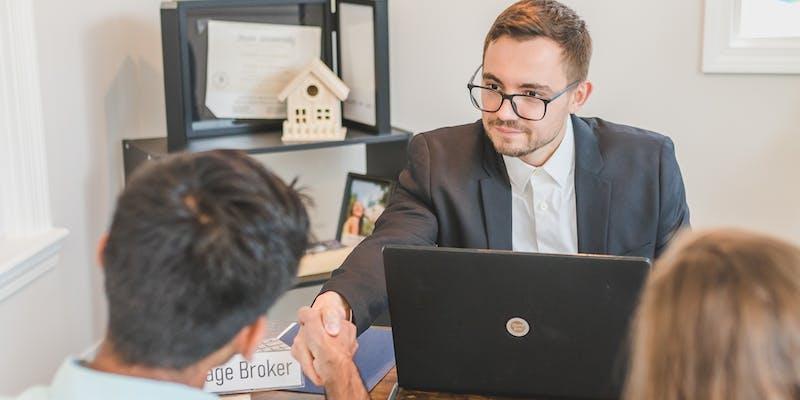Meaning, Advantages and Drawbacks of the 3-2-1 Buydown Mortgage
Dec 28, 2023 By Susan Kelly
A 3-2-1 buydown provides a pathway for aspiring homeowners, especially when high mortgage rates make buying a home seem out of reach. A benefit of this kind of mortgage is the reduced monthly payment you'll see in the beginning, thanks to the introductory 3 years of reduced interest rates. Interest rates are set to restore to their true amounts in the 4th year and stay that way for the remainder of the mortgage.
Understanding how a 3 2 1 mortgage functions is essential for those considering this option. Essentially, this mortgage strategy involves temporarily lowering the interest rate on the home loan. Such an arrangement is achieved when another person, mostly the seller, builder, or lender, pays upfront so that the buyer’s interest rate is reduced during the early years. The rate reduction follows a pattern: First-year depreciation of 3%, second-year of 1%, and third-year depreciation of .5%—the interest rate returns to normal during the remaining part of the loan’s life.
This mortgage is typically available for immediate and secondary homes but not investment properties. Moreover, if you are looking at an adjustable-rate mortgage (ARM), you should remember that the 3-2-1 buydown option is not available for ARMs with an initial term of less than five years.
As a comparison, an example of a buydown mortgage is the 2-1 buydown. In such a case, the interest rate reduces by 2% in the first season and 1% in the 2nd year before rising to a normal rate.
3-2-1 Buydown Mortgage Pros and Cons

It is crucial to look into the pros and cons of using the three two and one buy-down mortgage to ensure proper home financing. Here's a breakdown of the pros and cons:
Advantages
Attractiveness in High-Rate Scenarios: This mortgage option is particularly appealing when increased mortgage rates make home purchases less feasible.
Seller's Tool in Tough Markets: Sellers can use this strategy to attract buyers in difficult housing markets.
Future Income Flexibility: It's beneficial for those who anticipate higher earnings in the future but currently lack sufficient funds.
Early Savings Opportunities: The initial years of lower payments allow borrowers to save or allocate funds for other needs like home improvements.
Predictability in Long-term Budgeting: Once the loan reverts to its original rate, borrowers benefit from the predictability of fixed monthly payments, aiding in long-term financial planning.
Lower Risk Compared to ARMs: Fixed-rate 3-2-1 buydown mortgages are generally less dangerous than adjustable-rate or variable-rate mortgages, which can lead to increased payments due to increasing interest rates.
Disadvantages
Risk of Overextending Financially: The initial lower payments might tempt borrowers to purchase a home beyond their long-term financial means.
Preparation for Payment Increases: The reduced costs are only temporary, and buyers must be ready for higher payments.
Dependence on Future Income Increase: There's a risk involved if borrowers count on future income increases to afford higher payments, which may not materialize.
Alternative to Price Reductions: In some cases, sellers or builders might offer a temporary interest rate buydown instead of reducing the home price, particularly in scenarios where high mortgage rates impact affordability.
Subsidizing 3-2-1 Buydown Mortgages
Regarding who foots the bill for the initial savings in a 3-2-1 buydown mortgage, it's usually not the homebuyer. Most of the time, other players in the home-buying process are forced to bear the cost of this “benefit” that the buyer enjoys in the form of reduced mortgage payments over the first three years. These may include the seller, the home builder, or, occasionally, the mortgage lender.
For instance, sellers keen to sell in a competitive market might cover this expense to make their property more appealing to buyers. This is especially true when they want to expedite the sale or stand out in a crowded market.
In job relocations, companies might step to shoulder the buydown cost. This is a common practice when a firm is driving a worker to a fresh city and wants to ease the financial burden of the move.
Real estate developers, too, often use 3-2-1 buydowns as a promotional tool. They offer these incentives to attract buyers to their newly constructed properties, making these homes more financially accessible, at least in the initial years of homeownership.
Should You Go For 3-2-1 Buydown Mortgage?

Deciding if a 3-2-1 buydown mortgage is the right choice for you involves careful consideration of several factors. Choosing such a mortgage is risky if you assume that your earnings will grow drastically within the following years. Assuming that the interest rates won’t change is a big gamble. Managing the fourth-year payment may be a hurdle if yours is stagnant and the rate does not go as planned.
Job security is a crucial factor to ponder. You need to assess the stability of your current employment and the likelihood of unforeseen circumstances that could affect your ability to make higher payments.
Another important consideration is the source of funding for the buydown. If you must pay for the buydown yourself, weighing whether the upfront cost is justified by the benefit of lower mortgage payments in the early years is essential. This decision might be influenced by other financial priorities or opportunities, like investing that money or paying off high-interest debts such as credit cards or car loans. If you have spare cash and no pressing financial needs, a 3-2-1 buydown might be a sensible option.
The decision becomes simpler if another party, such as the seller or builder, covers the buydown cost. Consider whether the eventual higher payments are within your budget. It's also important to be mindful of not getting enticed into buying a more costly house than you can afford due to the attractive lower initial rates. Finally, ensure that the house is priced reasonably and the seller isn't inflating the cost to accommodate the buydown.
Final Thoughts
Even in a high-interest rate climate, homeowners still have a financing choice with a 3-2-1 buydown mortgage. This gives customers a chance to pay less on the initial 3 years of the mortgage loan. But, borrowers should realize that in the fourth calendar year of the mortgage, they’ll have to pay with the initial interest rate till the end date of the mortgage.





